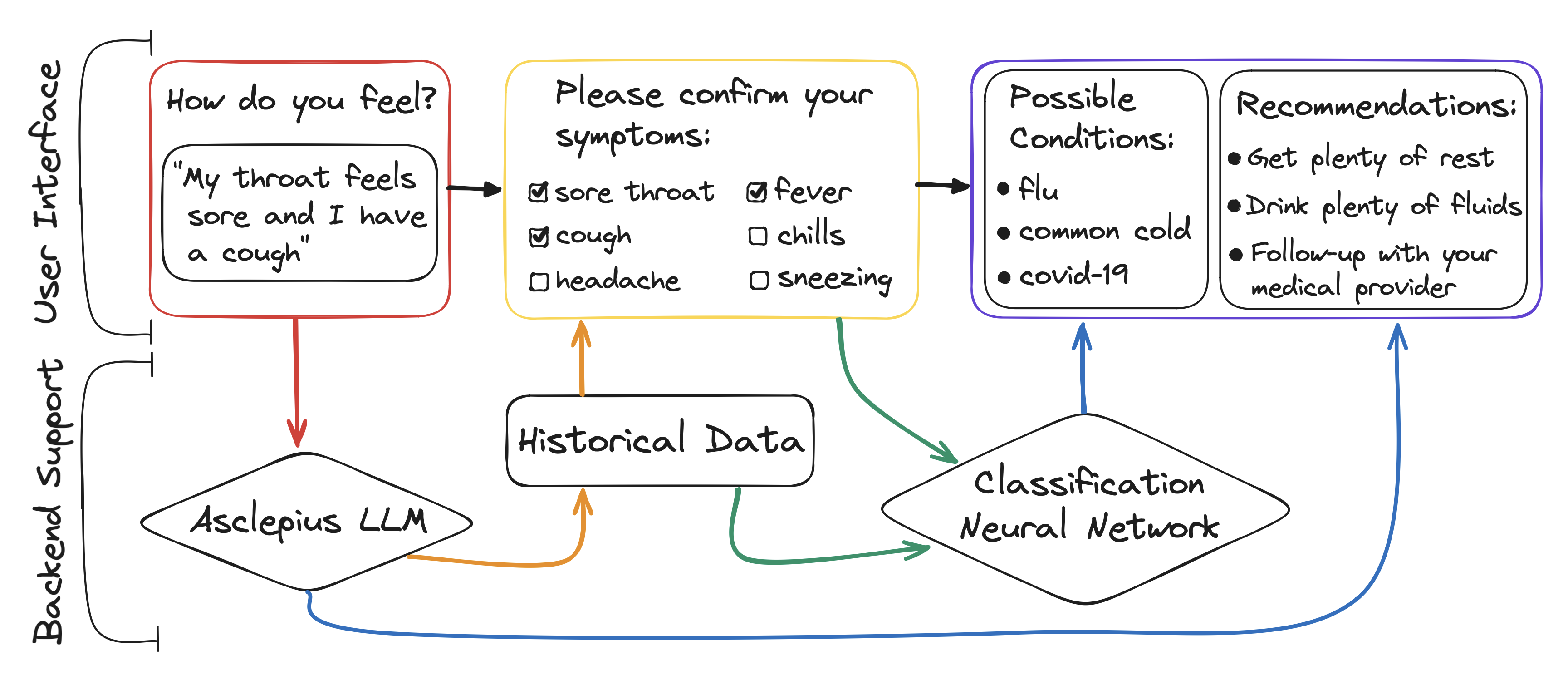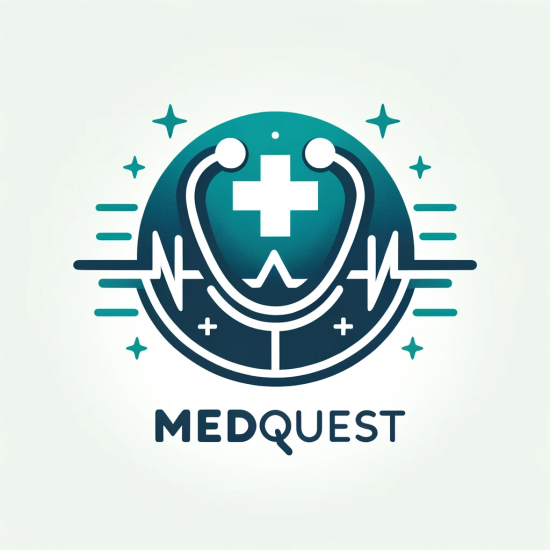MedQuest
Overview
Welcome to MedQuest, where we believe that everyone deserves accessible healthcare. At MedQuest, we are on a mission to bridge the gap in accessibility between those who need healthcare and those who can afford it.
Our platform is designed to empower the uninsured and underinsured by providing quick assessments and guidance on the next steps for their health concerns. MedQuest offers a user-friendly experience, allowing individuals to gain a basic understanding of their symptoms. By doing so, we not only promote health literacy but also aim to alleviate the strain on emergency rooms by directing users to the most appropriate medical facilities.
At the core of MedQuest is a commitment to democratizing healthcare information. We envision a future where everyone can make informed decisions about their health, regardless of their insurance status. Join us in our journey to make healthcare accessible to all, one symptom assessment at a time. MedQuest: Your path to health, simplified."
Problem & Motivation
In the bustling chaos of a medical waiting room, time takes on a life of its own. As a patient, every minute feels like an eternity when all you want is relief from a stubborn cold. Yet, the hours pass by as you sit surrounded by others, each with their tales of discomfort and impatience. On the other side, as a doctor, the relentless stream of patients creates a whirlwind of diagnoses and treatments, leaving little time to pause and truly connect with those seeking help. Caught in this cycle, both patient and doctor yearn for a moment of respite and understanding amidst the urgent rush of healthcare demands.
In the United States, approximately 10% of the population lacks access to healthcare, and countless more are underinsured. These individuals often find themselves relying on urgent care centers for basic medical needs, adding to the strain felt by both patients and healthcare providers. The systemic challenges of healthcare access and affordability cast a shadow over the already complex dynamics of the urgent care setting, highlighting the need for comprehensive solutions to ensure timely and effective care for all. That’s where MedQuest comes into play.
Data Source & Approach
Our approach is three-fold: the user assessment, the Asclepius LLM, and the neural network for classification. The user assessment piece is the UI where a user can input any symptoms they are feeling, which you will see in our demo.
The next piece is the LLM. In the current and evolving landscape of healthcare technology, our team is leveraging an advanced tool called Asclepius. Based on the Llama 2 model architecture with 13 billion parameters, Asclepius LLM is specifically designed for applications within the healthcare sector, offering a new dimension in medical diagnostics and patient care.
Our decision to utilize this model is rooted in its ability to process and interpret a vast range of medical data with remarkable accuracy and depth. This model is trained on an extensive corpus of medical literature, enabling it to provide context-aware responses to complex medical inquiries, from disease symptoms to treatment options.
The core of our approach with Asclepius involves advanced prompt engineering. This technique allows us to conduct high-level disease assessments because of its integration with ICD-10 Codes that allow us to join with the custom classification model we built. This allows us to input more detailed symptom information into the classification model. This method ensures that our diagnostics are not just based on a broad understanding of medical conditions but are fine-tuned to address specific patient symptomatology. And finally, it gives users the possibility to get tailored recommendations.
Finally, we have a neural network for classification. We decided to proceed with a deep neural network because it can scale better to handle larger and more complex datasets. Additionally, neural networks allow the implementation of other options such as architecture design, dropout, regularization, and hyperparameter tuning. Through the series of trial-and-error training runs, we were able to incrementally extract performance from our model.
This neural network takes in the user’s selected symptoms as input and then feeds it into the model to return the potential assessments based on those symptoms. Based on the classification’s softmax scores, we classify the top 5 diseases into a high or low category and only display those in the high category for the user to see. This could be anywhere from one to five diseases, depending on the number of symptoms the user inputs, and how specific they are.
Lastly, we reach back out to the LLM to get recommendations for the user for what to do if they have the top disease that was produced. This can include recommendations anywhere from taking rest and drinking fluids, to making an appointment with a specialist, depending on the severity of the disease.
Acknowledgements
We want to thank our capstone instructors, Danielle Cummings and Fred Nugen, for their insightful feedback, technical expertise, and encouragement throughout this process. We would also like to thank all the students in Section 11 for the invaluable feedback we received every week. Lastly, we would like to thank the colleagues, friends, and family members who assisted us in usability testing, and helped us make the product what it is today.











